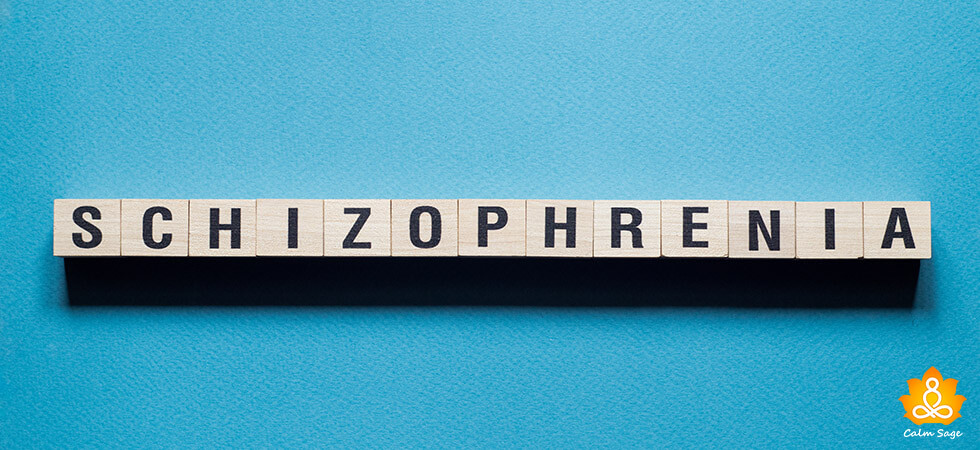Understand Schizophrenia Spectrum Disorder: Symptoms, Types and Treatment

Almost a decade ago, schizophrenia spectrum disorder would be labeled as schizophrenia and that would be it. However, as medical sciences advance, the criteria for diagnosing psychotic disorders are also changing. In 2013, the APA changed the psychotic disorder to reflect all symptoms – hidden and unhidden – in varying standards.
This change was then implemented in the DSM-5, the new and current manual of mental health disorders, under “Schizophrenia Spectrum and Other Psychotic Disorders”.
If we talk about schizophrenia and other psychotic disorders, then we’d say that schizophrenia exists on a spectrum and can be related to psychotic disorders and symptoms. Before the change in the DSM, there were five subtypes of schizophrenia:
- Paranoid
- Disorganized
- Catatonic
- Undifferentiated, and
- Residual
But now, these classifications are no longer used to diagnose the psychotic disorder. Now, the DSM, recognizes that schizophrenia exists on a spectrum and can manifest in different ways.
Below, let’s understand what is a schizophrenia spectrum disorder, the other disorders that come under the spectrum, and how to treat psychotic specturm disorders.
What Is A Schizophrenia Spectrum Disorder?
Schizophrenia is a chronic psychotic disorder that can interfere with one’s ability to think rationally, manage emotions properly, and connect with others healthily. It can occur at any age but the onset of schizophrenia begins in the late teens and early 20s.
In recent times, researchers have concluded that schizophrenia is a spectrum disorder. Spectrum disorders are a group of disorders whose symptoms are on a scale. The characteristics of the disorder can manifest in different ways and to different magnitudes. How the symptoms appear for one can be anywhere on the spectrum scale.
Some common examples of spectrum disorders are:
- Autism Spectrum Disorder
- Generalized Anxiety Disorder
- Social Anxiety Disorder
- Panic Disorders
- Trauma Spectrum Disorders
- Obsessive-Compulsive Disorder
To be diagnosed with schizophrenia spectrum disorder, you must have at least two of these symptoms. These symptoms should last for or more than 6 months:
- Delusions
- Hallucinations
- Disorganized speech
- Catatonic behavior
- Negative symptoms
To be diagnosed with schizophrenia, the symptoms you must have are delusions, hallucinations, and speech disorders. These symptoms can interfere with your daily life and can affect almost every aspect of your life. However, if your symptoms do not match the above criteria, then your diagnosis may be related to a spectrum disorder.
Schizophrenia Spectrum Disorder: The Symptoms
The main symptoms of schizophrenia are of three types; positive, negative, and disorganzied (as mentioned in the above section).
Positive symptoms can include hallucinations, delusions, and abnormal behaviors or beliefs. If your loved one often talks to themselves or seems to see things where there are none, then it could mean that they are experiencing the positive symptoms of schizophrenia.
Negative symptoms can mean a decline in the normal actions of a person. This can look like an inability to display emotions, a lack of motivation, or avoidance of social events. If your loved one constantly withdraws from social functions or avoids school, friends, or work, then they could have the negative symptoms of schizophrenia.
Disorganized symptoms can look like distorted thinking, disordered speech, and strange movements. If your loved one often replies to questions with illogical answers or quickly changes topic abruptly, then they could have the disorganized symptoms of schizophrenia.
Schizophrenia Spectrum Disorders: The Types
Other than schizophrenia, the other psychotic disorders that can exist on the schizophrenia spectrum disorder can include:
1. Schizophreniform Disorder
The schizophreniform disorder can be similar to schizophrenia, the only difference is that the symptoms of schizophreniform disorder lasts for 1-6 months whereas the symptoms of schizophrenia lasts for more than 6 months.
2. Schizoaffective Disorder
Schizoaffective disorder can be described as having symptoms of schizophrenia with a mood disorder such as bipolar disorder or depression. The symptoms such as delusions or hallucinations need to be there for 2 weeks before the mood disorder symptoms appear.
3. Delusional Disorder
The delusional disorder involves one having delusional thoughts that last for at least a month. These delusions can range from bizarre to non-bizarre things. In this disorder, the functioning and behavior of a person is not affected much but the thoughts and beliefs this disorder causes can affect relationships and academic performance.
4. Schizotypal Personality Disorder
Schizotypical personality disorder symptoms can look similar to schizophrenia but are less intrusive and intense. The symptoms can include:
- Being socially aloof
- Having an intense fear of intimacy
- Disordered thinking
- Ineffective communication skills
5. Brief Psychotic Disorder
If there’s a brief episode of psychosis that lasts between a day and a month can be described as a Brief Psychotic Disorder. The symptoms of this psychotic disorder can include:
- Hallucinations
- Delusions
- Disorganized speech
- Disorganized behavior
6. Shared Psychotic Disorder
Shared Psychotic Disorder or Folie à Deux, while removed from DSM-5, can also be considered a psychotic disorder on the schizophrenia spectrum. This disorder is when two or more people in a close relationship share delusion or delusional beliefs. This disorder can also affect a larger group too.
7. Psychotic Disorder (Medical Condition)
When the symptoms of psychosis occur with a chronic illness or other medical conditions, then it can also exist on the schizophrenia spectrum. This disorder can happen due to brain impairments during illnesses such as:
- Stroke
- Autoimmune disease
- Thyroid
- Epilepsy
- Multiple sclerosis
8. Substance-Induced Psychotic Disorder
Some symptoms of psychosis can occur due to the high use of medications, recreational drugs, or other substances. When this happens, then it can be called Substance-induced psychotic disorder. The symptoms can be:
- Hallucinations
- Delusions
- Unusual beliefs
- Delusions of persecution
- Reduced emotional expression
- Aggression
- Disordered thinking
- Disorganized speech
9. Other Conditions
Some other conditions can co-occur with or look similar to schizophrenia. These conditions can be:
- Substance Use Disorders
- Post-Traumatic Stress Disorder (PTSD)
- Obsessive-Compulsive Disorder (OCD)
- Major Depressive Disorder (MDD)
Treating Schizophrenia Spectrum Disorders
Schizophrenia symptoms can be controlled with the right tools and treatment. The treatment of schizophrenia depends largely on the specific disorder. In most cases, the treatment can be offered but might not have a cure.
The only exception is Psychotic Disorder – Medical Conditions.
Treatment for schizophrenia spectrum disorders can include:
- Antipsychotic medications
- Psychotherapy – Cognitive-Behavioral Therapy or Supportive Therapy
- Self-Help strategies
- Self-Awareness or Self-Education
The symptoms of schizophrenia can appear differently in different people. The way they manifest can vary in intensity and duration but the one thing that remains constant is the way they affect one’s everyday life.
By understanding the schizophrenia spectrum disorder, you can move forward knowing that other conditions might have the symptoms of schizophrenia but might differ in many ways.
Schizophrenia and psychotic disorders can also exist on a spectrum so it’s important to get the right and accurate information and diagnosis from a professional to get the right treatment. Some conditions might not have a cure but can still be treatable with the right medication and intervention.
I hope this article helped you understand schizophrenia spectrum disorder, the symptoms to look out for, the other disorders on the said spectrum, and how to treat them.
For more, you can write to us at info@calmsage.com or DM us on social media. You can also share your thoughts with us in the comments below.
Take Care!




















